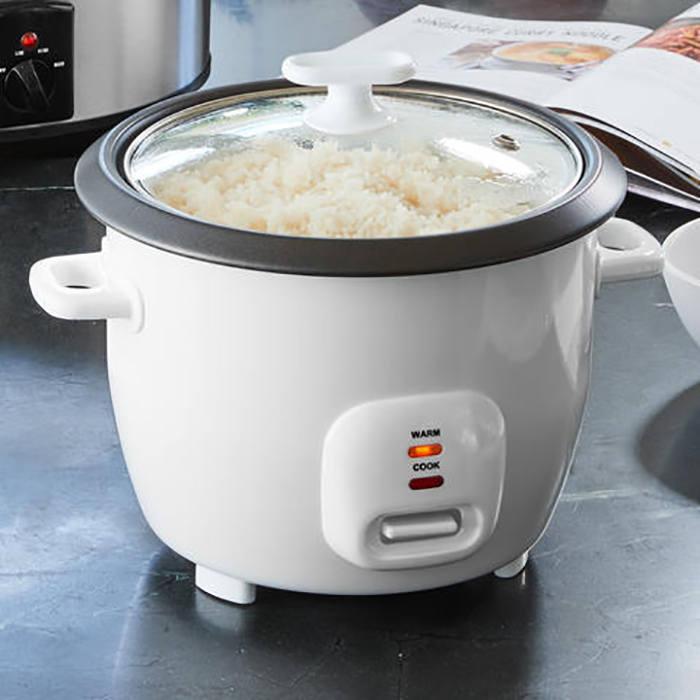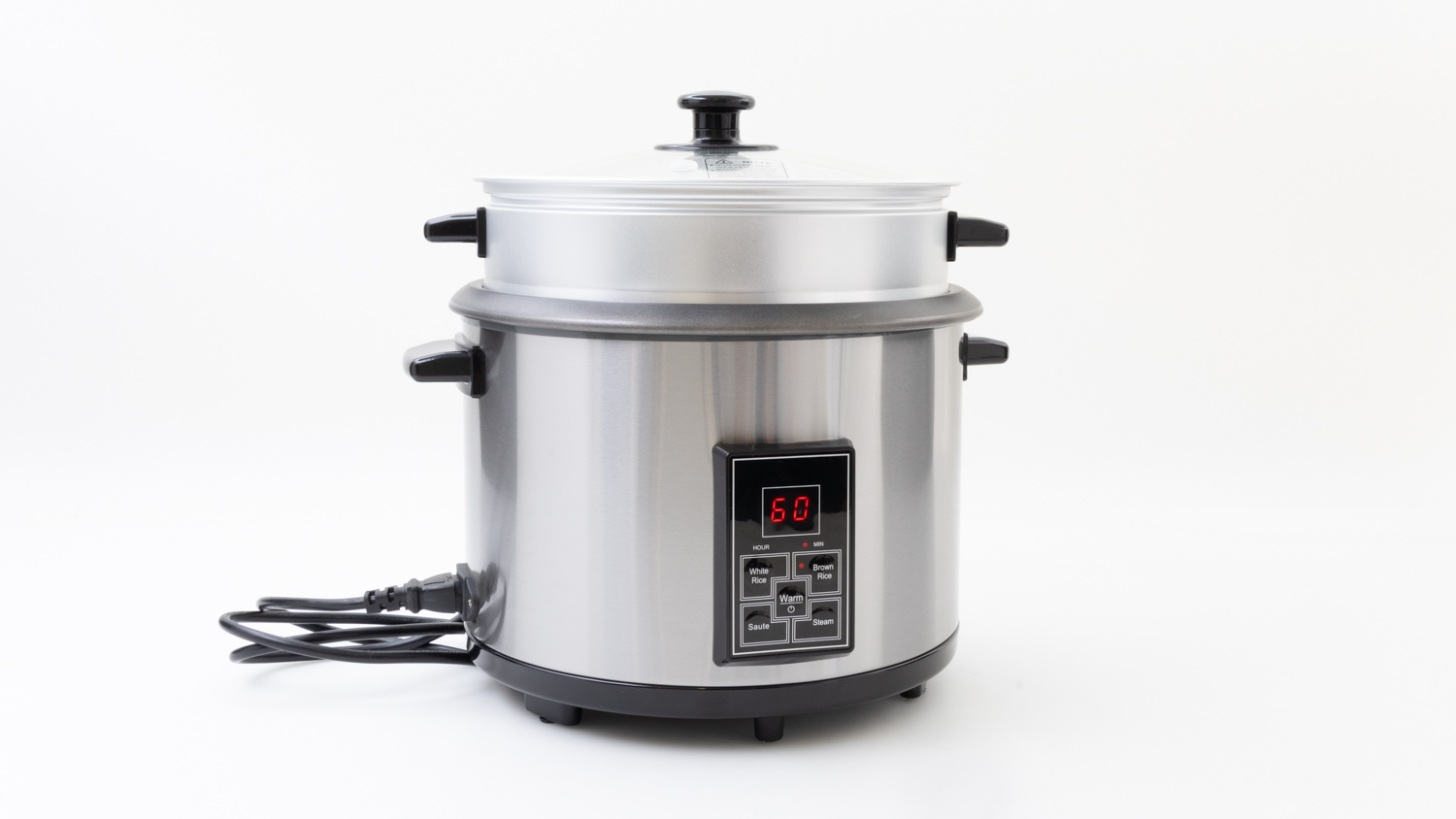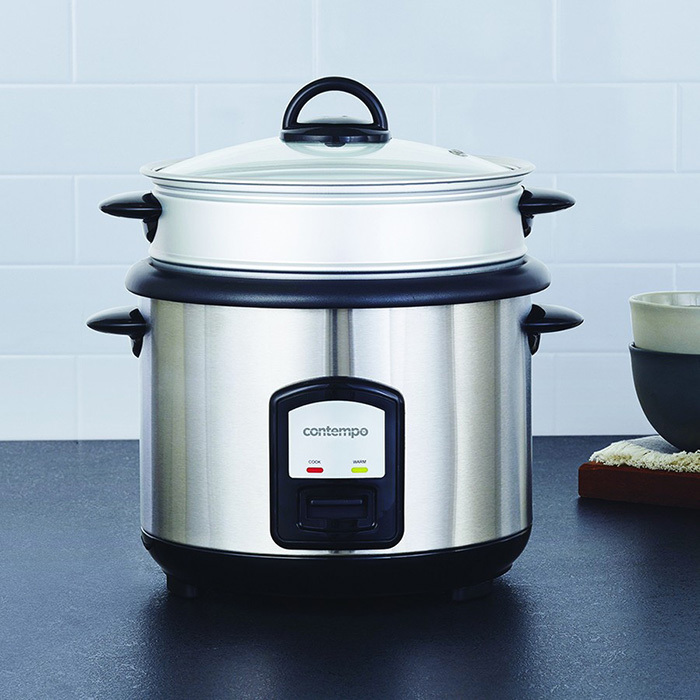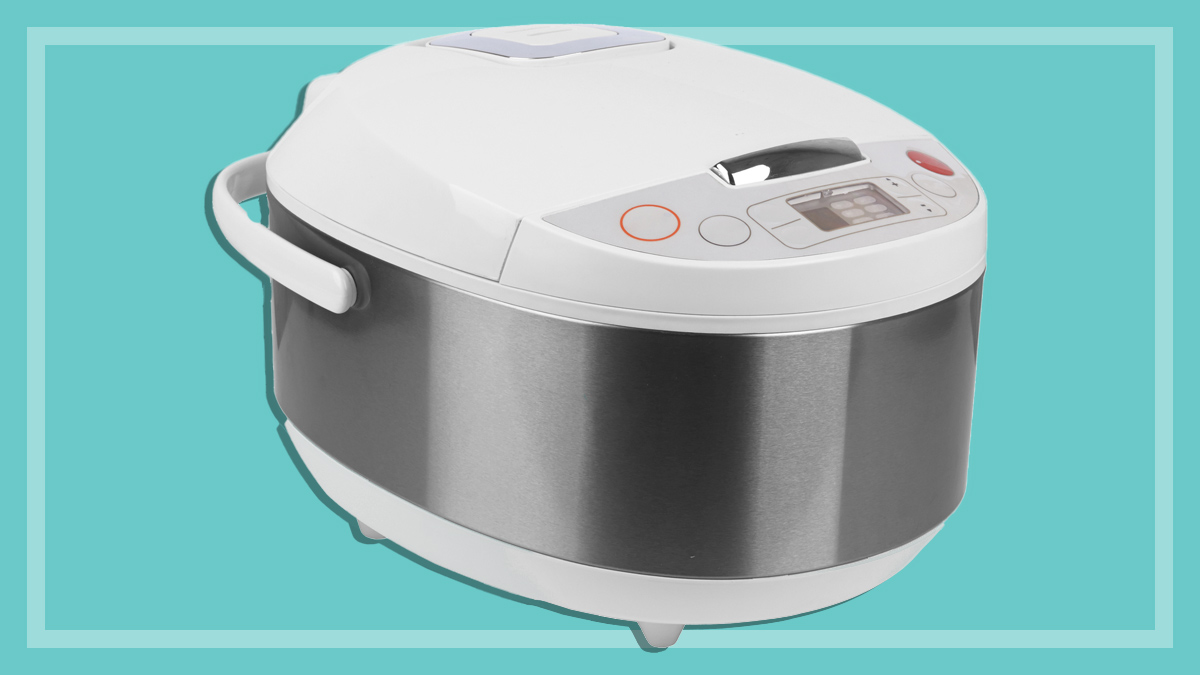Get our independent lab tests, expert reviews and honest advice.
Is a cheap rice cooker the answer to your budget meal-prep prayers?

Need to know
- Rice cookers are a popular kitchen addition – they free up hob space and help you turn out perfect rice for all your mealtime and meal prep needs
- They range from basic models that just cook rice to fancy multi-program machines you can use to cook different grains and make everything from porridge to congee
- In our kitchen labs, we tested 27 rice cookers from brands including Sunbeam, Breville and Kambrook, ranging in price from $13 to $350
Let’s see a show of hands – how many of you find the absorption method of cooking rice elusive and utterly confounding? If you can’t seem to find the sweet spot between soggy grains and a burnt saucepan, you may be a prime candidate for a rice cooker.
Or perhaps you just like to eat a lot of rice and you’re looking for a convenient way to prepare it. After all, it’s a cheap, nutritious and crowd-pleasing way to bulk out a number of family-favourite dishes, from stir-fries to chilli con carne, salads and more.
A rice cooker can make it easy to get fluffy, perfectly-tender grains, every time
A rice cooker can make it easy to get fluffy, perfectly-tender grains, every time.
Rice cooker prices range from just $13 for a budget option, all the way up to about $350 for a premium brand model.
So why the huge price differences? What can expensive rice cookers do that the cheaper ones can’t? And is it worth spending the extra money in pursuit of first-rate rice?
You don’t need to spend big for decent performance
CHOICE experts have tested over 25 rice cookers in our kitchen labs, and their results reveal some well-performing models at both ends of the price scale.
When it comes to more frugal options, our experts found four examples – from Big W, Kmart and Target – that scored relatively well in our performance tests and will leave you with change from a $50 note.
If you’re aware of the issues and don’t feel they’re a problem for you, then these models are worth considering if you’re on a tight budget
Fiona Mair, CHOICE kitchen expert
Two of these even score high enough to be recommended by our experts (CHOICE members can view recommended rice cookers), outperforming some more expensive models while representing great value for money. (Two of them cost well under $20!)
The budget models aren’t perfect, but CHOICE kitchen expert Fiona Mair says, “If you’re aware of the issues and don’t feel they’re a problem for you, then these models are worth considering if you’re on a tight budget.”
Budget rice cookers worth considering
CHOICE tested four budget rice cookers costing $39 or less that we think you could be happy with.
“Although they’re very basic rice cookers, they’re inexpensive and relatively easy to use,” says Fiona.
- Big W Brilliant Basics Rice Cooker – $14.
- Big W Contempo 10 Cup Rice Cooker with Steamer – $39
- Anko 10 Cup Rice Cooker – $39 (available in Kmart and Target)
- Anko 7 Cup Rice Cooker White – $14 (available in Kmart and Target)

Kmart and Target rice cookers
We’ve tested two Anko (available now in Kmart and Target stores) rice cookers that cost $39 or less.
Let’s start with the $14 Anko rice cooker. We first tested an earlier version of this rice cooker in 2021, but it has since improved in its performance, cooking jasmine and brown rice exceptionally well, and receiving “excellent” results in these two tests. But, as its price suggests, this medium-capacity device lacks the features and functionality of a more expensive rice cooker.
The settings, although easy to use, are basic. It doesn’t suction to the bench and can slide easily. The surface of the cooker can also become dangerously hot. And there’s no audible beep when your rice is ready.
Still, for such a small price tag, you may be willing to forgive these issues for rice at the touch of a button.

Then there’s the 10-cup rice cooker that costs $39.
For an extra $25 you’ll get more functionality and a larger capacity rice cooker. The controls have written labelling with bright indicator lights as well as four settings: white rice, brown rice, saute and steam. It’ll also alert you when cooking is completed. However, it also doesn’t suction to the bench and can slide easily, and the surface of the cooker can become dangerously hot.
How does it perform? Exactly the same as its $14 counterpart. If you’re looking for a larger capacity and think you’ll make use of the additional steamer basket then this is worth a look.
Big W rice cookers
Next up is Big W, which like Kmart sells two rice cookers, one for $14 and another, larger 10-cup-capacity model for $39. But, as CHOICE testing so often shows, more expensive doesn’t always mean better.

If you really only want to spend $14, our testers point to the Kmart counterpart as the better overall performer. The $14 Kmart rice cooker also has a slightly larger capacity, yielding seven to eight cups of cooked rice, whereas the Big W version will only yield five to five-and-a-half cups.
And the larger $39 rice cooker from Big W?
“We found that the larger Big W model wasn’t as good because the base browned when cooking brown rice and the water level inside the bowl can be hard to view,” says Fiona.
As with the Kmart model, it also became dangerously hot.
A messy affair
Our testers warn users to be prepared for a bit of spillover with the Anko and Big W rice cookers.
“With all four models, we found that they can bubble up over the glass lid and starchy water can splatter onto the bench,” says Fiona.
Aside from being irritating, this also makes the glass lid difficult to clean. And although each of these models automatically sets to warm once the rice has finished cooking, that’s not always a good thing, as Fiona says this can overcook the rice.
What they do and don’t do
You can expect your budget rice cooker to cook near (but not quite) perfect rice. Some more expensive models in our tests received a 100% success rate in this singular function while others don’t stack up as well for the price you pay. The two Kmart models get close, proving that some budget cookers can give great results, and in some cases, perform better than their more expensive counterparts.
But spending less also means you’re likely to be sacrificing multi-functionality and detailed electronic displays.
Cheaper appliances may also use cheaper parts and have shorter warranties than more expensive products. Replacement parts may also be hard to come by and you may receive better customer service from an established brand rather than a discount retailer.
Things to consider before buying a cheaper rice cooker
The temptation to serve up delightfully fluffy rice each time may be enough to send you running to the check-out with your low-cost rice cooker, but before you scan, consider how much you really need it.
After all, it’s just another appliance on your benchtop, and if you’re not an avid rice eater or you have a large family, these small machines don’t necessarily provide bang for your buck.
Do you really need it?
It may also not be what you need. These simple models cook rice, that’s it. If you’re looking for something to assist in making risotto, porridge or congee, you’d be better off spending more and choosing a model with pre-programmed settings. Take a look at our rice cooker reviews to find the best fit for you.
You could also consider a multi cooker if you don’t already have one. These workhorses can carry out functions like slow and pressure cooking as well as many others depending on the model. A multi cooker could be a better investment if you think you’ll make use of its many functions. Models we’ve tested do a good job of steaming or pressure cooking rice too.
And if you want to get away without buying yet another appliance, you can always have a go at cooking rice using your cooktop – using our kitchen expert’s method.
Ingredients
1 cup or 200g white long grain rice
10g butter
1 ½ cups or 400ml hot water
½ teaspoon salt
Method
- Place rice in a mesh strainer and rinse well under cool running water until water runs clear. Allow to drain in the strainer and set aside.
- On medium heat, melt butter in a medium saucepan, add rice and fry, stirring until all the rice is coated in butter, approximately 1 minute.
- Increase heat to the highest setting, add hot water and salt, stir and bring to the boil.
- Turn heat to low setting, cover saucepan tightly with foil and lid. Cook without lifting the lid for 16-18 minutes (depending on your cooktop).
- Remove from the cooktop and remove the lid and foil to allow steam to escape, fluff rice with a fork.
Note: Rice ratio is 1 cup uncooked rice to 1 1/2 cups water.
Is it realistically repairable?
Cheaper appliances often cost less because they may be made with lower quality components that may not last as long or are unable to be repaired. This means that cheaper models may be destined for landfill much sooner, rather than lasting for decades as better quality appliances can. It’s likely that any cost to repair or replace parts of a cheap, broken cooker would be more expensive than the initial purchase.
CHOICE experts don’t test for longevity, but it’s likely that cheaply made appliances will reach the end of their lifespan quicker.
Looking after your rice cooker
“If you’re overloading the bowl and don’t maintain your rice cooker (for example, if it boils over inside the unit) and you don’t clean it after each use, it’s possible it won’t last the year,” warns Fiona.
Still, for avid rice eaters, these little units can be a real time saver.
“For families who cook rice regularly, a rice cooker can be extremely handy,” says Fiona. “But if you only occasionally cook rice, try the absorption method on your stove, or if your microwave has a sensor rice function, use it – the results are often perfect.”
How we test rice cookers
We choose popular rice cookers from a variety of brands and put them through their paces in our test kitchen. As rice cookers all share the prime function of cooking rice well, that’s exactly what we look for, using both brown and white rice.
The grains should be firm (with brown rice having a slightly chewier texture), not mushy, and remain separate.
We also look at how easy the appliance is to use, store, clean and disassemble. If a rice cooker comes with specific settings for functions such as risotto or congee, we’ll take those into account, too.






